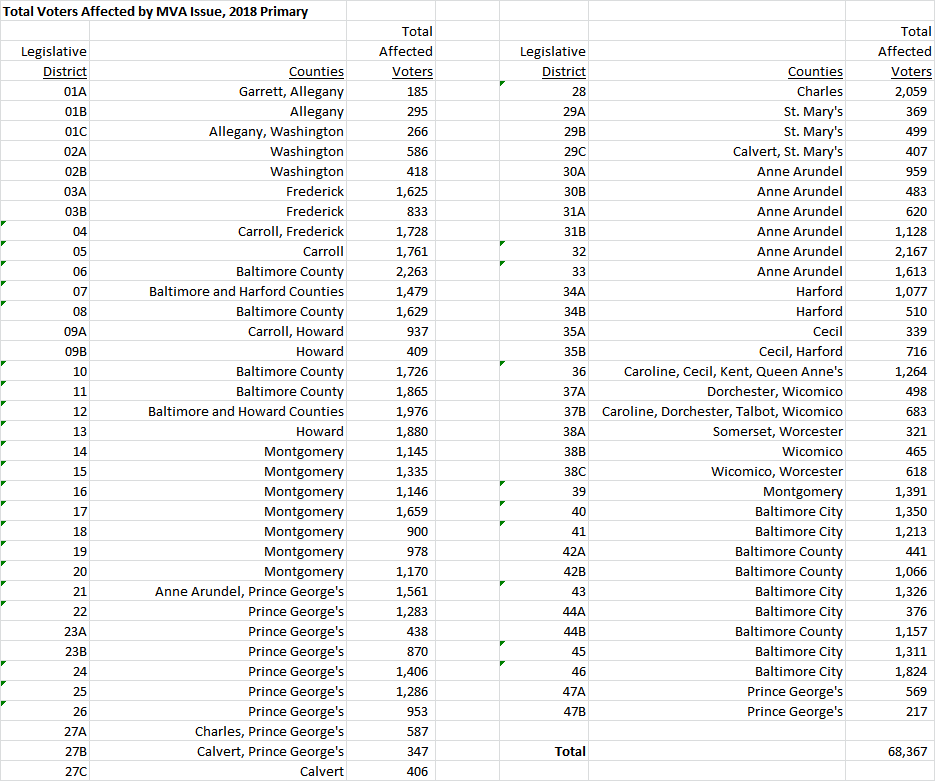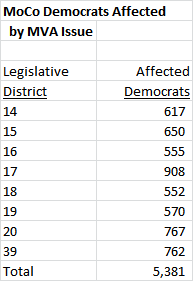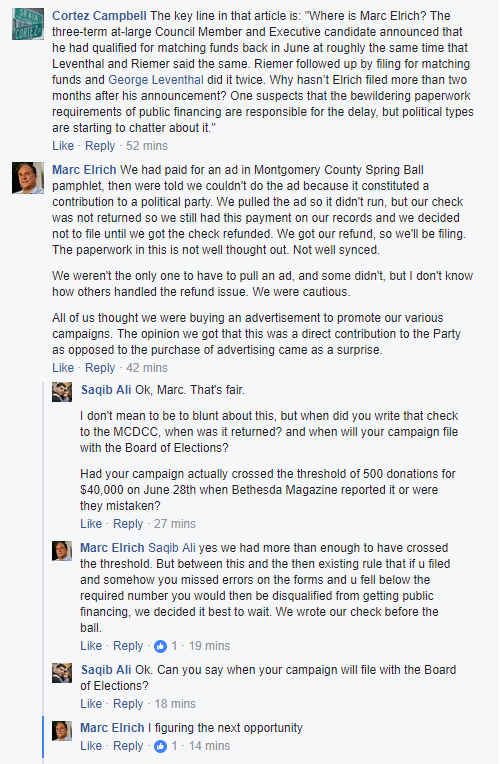Ballots arrived at an irregular pace this year. Then, when they came, the ballots had the original primary date of April 28th printed on them. What happened?
Late Ballots
Snafus with SeaChange, the vendor used to print and to mail the ballots, explain many of the problems. According to Deputy State Administrator Nikki Charleson at the Maryland State Board of Elections, “the vendor did not meet the schedule for Montgomery or Baltimore City” and ballots were “mailed out later than planned.”
Ballots for Baltimore City, the locale with a number of hot local contests, were supposed to have been mailed on May 8 but SeaChange did not start posting them until significantly later. In a press release, the State Board blamed SeaChange explicitly not only for missing the deadline but misleading Maryland election officials:
On May 7, SeaChange informed SBE that ballots for Baltimore City were printed and would be mailed on May 8 and confirmed on May 11 that some Baltimore City ballots had been mailed. SBE relied on this incorrect information when communicating with the public, advocacy organizations and candidates. While some files were late, it was the misleading information provided by SeaChange that led to the unmet expectations and the confusion over the ballot delivery process.
Will there be a lawsuit? Refund? Unquestionably, this should be investigated by the General Assembly. Mistakes happen, especially during a crisis but the state shouldn’t be misled by its vendors. Lying isn’t a symptom of coronavirus.
Similarly, ballots for Montgomery did not get sent until after the scheduled date. In many households, a ballot arrived for one adult but not for another. The mailing of ballots for a single local jurisdiction on different dates probably explains this strange pattern.
When I communicated with the Montgomery County Board of Elections, I also learned that there was a problem with absentee ballots. Although, everyone was effectively an absentee voter due to the adoption of universal vote-by-mail, voters who requested absentee ballots were on a separate electronic list and were not mailed ballots simultaneously with other voters.
Charlson explained that the vendor, SeaChange, had served as a subcontractor for printing ballots in 2018 as well as the special primary and general election in the Seventh Congressional District this year. She said that the state did not experience any problems that warranted not engaging SeaChange again at that time.
Why Did the Ballots Say April 28th?
The original primary was scheduled for April 28th. Given the timing of the Governor’s executive order mandating both the change of election date and vote by mail, the ballots were already finalized with many already printed. As a result, the State Board did not deem it feasible to reprint ballots with the new date, though notices were included to highlight that they remained valid notwithstanding the later date.
Who Should Receive Ballots?
Although it’s a primary, you should still receive a ballot if there is a school board race in your jurisdiction even if you’re not registered with a party. All school boards in Maryland are nonpartisan, so voters who are not affiliated with a party can participate in the primaries for these contests.
All active registered voters should receive ballots. Active is defined quite broadly and may include people who haven’t voted for a number of elections. People who have moved or died may still be considered “active voters” unless the Board discovered that they were no longer eligible because their mail was returned or through a number of other checks undertaken by the Board. In short, the state errs heavily on the side of keeping someone on the rolls and it is unlikely that you have been wrongly purged from the voter rolls.
If you didn’t receive a ballot, you should contact your local Board of Elections and consider voting at one of the open polling places on Election Day, June 2nd, as time is short for another ballot to get mailed and arrive. Remember that all ballots postmarked by June 2nd will be counted as long as they arrive before 10am on June 12.






